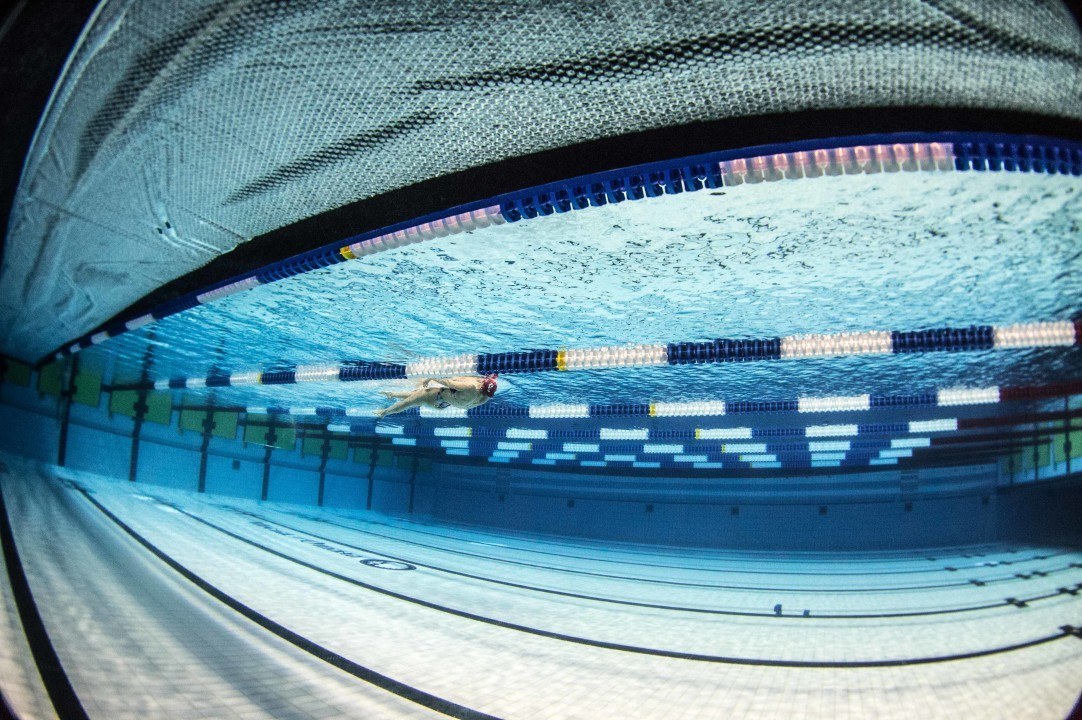“With power comes great responsibility”
Attributed to Voltaire and also said by Uncle Ben in Spiderman.
The swim stroke is broken into three phases:
- The catch phase – which can be a speerfish, over the barrell, or a classic reach and set pool catch.
- The power phase – the middle part of your stroke, which involves a press to get the wrist back to the elbow.
- The propulsion phase – In a distance race it is the back or the finish of your stroke – in a sprint you need to make it happen earlier by catching earlier and engaging your latissimus dorsi earlier.
The Power Phase – 41 degrees of power
After working at Swim Labs for over a year, and spending countless hours researching, analysing, and measuring angles of hundreds of elite swimmers in the power phase, I have found that is that there is a 41 degree angle of power with the elbows out and the forearms and wrists in, in the power phase.
Katie Ledecky and Michael Phelps are both at 41 degrees. They both have made a Superman logo in the middle of their stroke. Think of a very solid T (sternum and shoulders,) and inflated chest and the Superman logo. Not only do you need to get the angle right but to have full power of the latissimus dorsi, you also need to have the wrist and forearm in line and the hand down to engage the full power of the latissimus dorsi.
The latissimus dorsi is stronger and more powerful than your shoulders will ever be, Even at a 90 degree angle, with your palms straight down you are engaging your lats. But now knowing the uber elite are making a Superman logo, it is nice to have a visual and know you have 41 degrees in which you can work and derive more power.
The forearms have more surface area than your hands, so always use them. Proprioceptively we are so connected our hands but we need to heighten our awareness, expand our horizens and use everything, we can to make our swim faster and easier.
At the end of Voltaire’s actual quote he says prudence, or cautiousness, (which I consider deliberation very important in the power phase), they shall owe their success and their glory.
“Ce sera à leur énergie, à leur courage, et sur-tout à leur prudence, qu’ils devront leur succès et leur gloire.”
“To their energy, to their courage, and above all to their prudence, they shall owe their success and their glory.”
It will be nice to attribute your success to a higher power… even if it is a man made Superpower.
About the author:
Eney Jones has achieved remarkably diverse success as a leading pool, open water and Ironman triathlon swimmer, and is also a yoga instructor.
- Masters National Champion 100-200-400-500-1500-1650 5k freestyle 2009
- Open Water 5k Champion Perth Australia, May 2008.
- National Masters Champion 200-400-1500 freestyle Champion, Portland Oregon, August, 2008.
- Overall Champion Aumakua 2.4k Maui Hawaii, September 2008
- Waikiki Rough Water Swim 3rd place 2006, second place Overall 2009, 3rd place 2012
- European Record Holder and Masters Swimming Champion, 2005. Records included 200, 400, 800, 1500 m freestyle
- Over twenty time finalist in U.S. Swimming Nationals, including Olympic Trials 1980
- Gold medal NCAA 800 yd freestyle relay 1979, silver Medalist 200 yd freestyle 1979. United States National Team 1979-1980.
- Professional Triathlete 1983-1991. First woman out of the water in every Hawaiian Ironman participated (6).


This article…
Yay Eney!
41 degrees where in the stroke for how long? your picture shows a nice 41 degree angle between the vectors from elbow-hand to elbow-foot. ????? otherwise the angle in the picture looks like a very meaningless random angle. I don’t understand.
I would love to know which angle you are measuring. From the picture it I cannot tell what points you are using to get an angle of 41 degrees.
It seems to be 41 degree angle off a 90 degree angle. So actually it’s a131 degree angle between forearm and upper arm.
Quite right A.Coach. Though in the water, it it easier to think of it as (call it) 45 degrees inward bend of the elbow from straight arm position.
I try to catch and pull closer to centreline myself, which mean that I bend my elbow less than 45 degrees to pull my hand through a straight line from front towards feet.
So the optimum angle depends on relative area of hand and forearm, and length of forearm – with Phelps like long arms and big hands, hand speed and direction count a lot – maybe delivering even more propulsion than forearms for my physiology